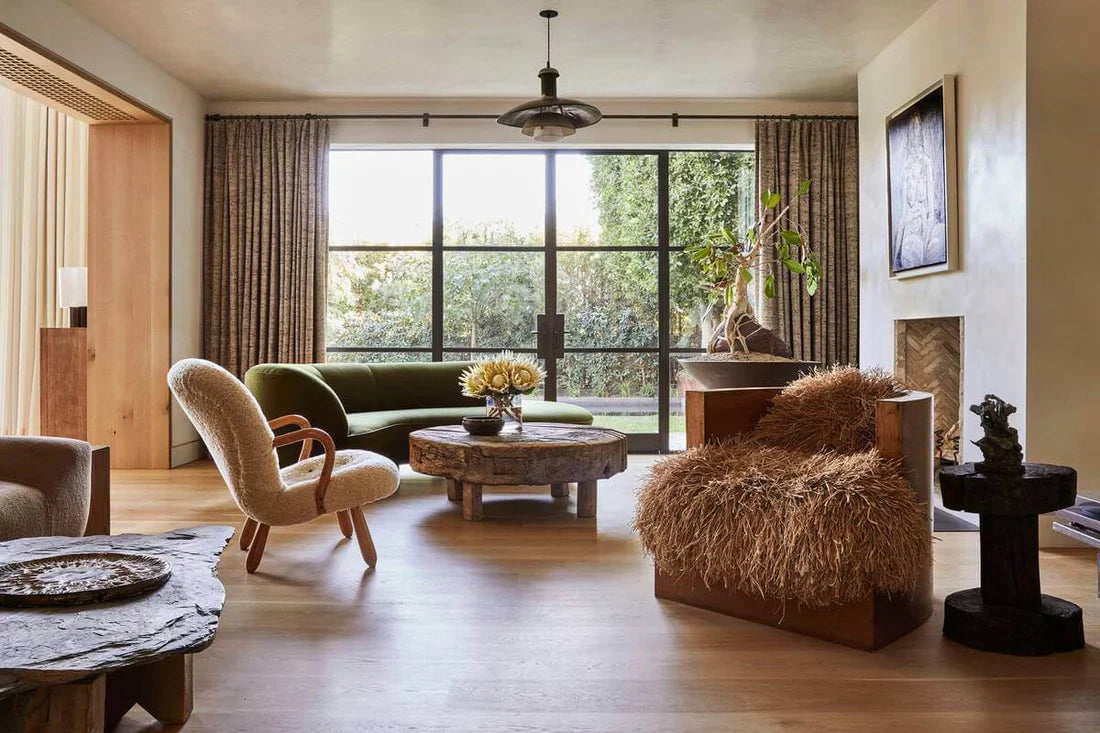
The Shift Toward Sustainable, Feel-Good Interiors
Once upon a time, decorating your home was about matching throw pillows to curtains and hoping the rug didn’t clash. Fast forward to now, and the design conversation has taken a deep (and much-needed) breath.
Today, good design isn’t just about how your space looks — it’s about how it makes you feel.
Welcome to the era of well-being and sustainable choices — where health, happiness, and home style all share the same mood board.

The New Rule: If It’s Not Healthy for You or the Planet, It’s Out
We’ve officially entered the age of conscious interiors. Designers, homeowners, and even big brands are pivoting from aesthetics-only thinking to a more holistic approach — one that prioritizes both mental wellness and environmental sustainability.
That means rethinking what we buy, what it’s made of, how it’s sourced, and whether it’s adding calm or chaos to our daily lives.
Because, let’s face it — no one can meditate in a room that smells like off-gassing particleboard.

1. Lighting That Loves You Back
Lighting might be the most underrated mood booster in your home. Natural light improves sleep, energy, and focus — but when the sun sets, it’s all about mimicking that same soft rhythm indoors.
What’s trending:
Warm, dimmable LED bulbs that support circadian health.
Statement fixtures made from recycled metal or handwoven rattan.
Layered lighting — ambient, task, and accent — to match your body’s rhythms, not just your Pinterest board.

2. Breathe Easier: Airflow & Materials Matter
We’re all thinking more about the air we breathe — and rightly so. A well-designed space should help your body, not work against it.
Key design moves:
Natural ventilation: windows that actually open (radical concept, I know).
Houseplants: not just for Instagram — they literally clean your air.
Low-VOC or VOC-free paints: the unsung heroes of modern design.
Natural fibers: linen, cotton, jute, and wool over synthetic blends.
Even small changes — like choosing solid wood furniture over MDF — can drastically reduce indoor pollutants.

3. Sustainability Is the New Luxury
Forget fast furniture. The true status symbol now? Owning pieces that last.
Why it matters:
You buy less (and better).
You support artisans and small businesses.
You keep furniture out of landfills.
Sustainability isn’t about perfection — it’s about intention. Choosing the rug that’s handwoven from recycled wool over the one that’s “new and cheap” isn’t just a style decision — it’s a lifestyle one.

4. Spaces That Calm the Mind
Design psychology is trending for a reason: people are realizing that their home environment directly affects mood, focus, and stress levels.
What helps:
Decluttered surfaces (visual peace = mental peace)
Rounded shapes and soft edges in furniture
Nature-inspired palettes: clay, moss, sand, sky blue
Textures that invite touch and comfort
The best spaces in 2025 feel like a gentle exhale. They remind you that it’s okay to slow down.

5. The Wellness Decor Checklist
If you’re wondering where to start, here’s a quick guide:
Opt for natural or recycled materials wherever possible.
Choose non-toxic paints, stains, and textiles.
Incorporate plants and organic shapes.
Prioritize natural light and proper ventilation.
Invest in quality over quantity.
Small choices add up — and they all lead toward a home that genuinely supports your well-being.

The Takeaway: Design That Feels as Good as It Looks
Trends come and go, but the movement toward health-conscious, sustainable design is here to stay. This is the era of beautiful homes that actually make you feel better.
Good design means good energy, good materials, and good intentions. Because ultimately, the most stylish thing you can do is care — about yourself, your space, and the planet you call home.
-Juliette
